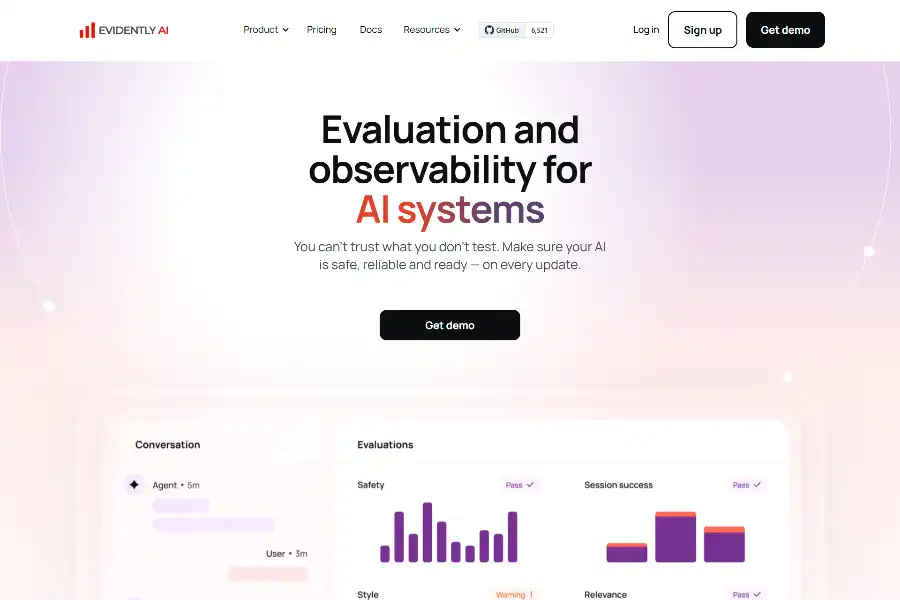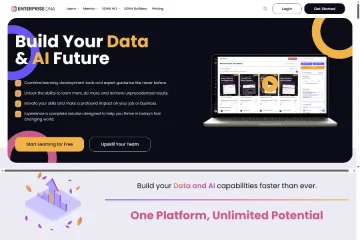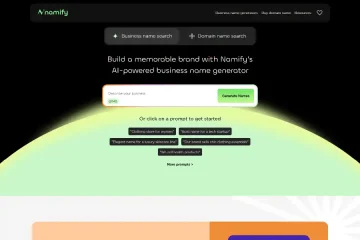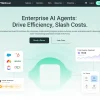
Revolutionary 10X Performance Boost with Evidently AI: The Ultimate LLM Observability Platform You Must Deploy Today
Introduction: Why Evidently AI Is Making Data Teams Cheer
In the fast-moving world of machine-learning operations, nothing kills momentum faster than silent model degradation or surprise data drift. Evidently AI—an open-source, Python-first evaluation and observability framework—has rapidly become the go-to Swiss-army knife for data scientists, ML engineers, and LLM builders who refuse to let their models fail in the dark. Backed by glowing testimonials from industry leaders such as DeepL, Wise, Realtor.com, and Flo Health, Evidently AI promises and delivers a 10X acceleration in detecting, diagnosing, and fixing data-quality and model-performance issues. This article explores the technical core, feature richness, real-world impact, pricing philosophy, and future roadmap that make Evidently AI a non-negotiable layer in modern ML stacks.
Technical Architecture: The Engine Under the Hood
At its heart, Evidently AI is an open-source Python library that generates interactive, shareable reports and automated data tests. The architecture is intentionally lightweight yet extensible:
Statistical Drift Detection Engine
Evidently implements both parametric and non-parametric statistical tests—Kolmogorov–Smirnov, Chi-squared, Jensen–Shannon divergence, Wasserstein distance, PSI, and more—across tabular, text, and embedding data. A smart default selector chooses the most appropriate test automatically, freeing users from statistical guesswork.
LLM-as-Judge Scaffolding
For large-language-model pipelines, Evidently integrates LLM-based evaluators (OpenAI GPT, Claude, open-source Llama variants) to score response relevance, toxicity, hallucination risk, and custom rubrics. The library caches results using deterministic hashing to reduce token costs.
Declarative Test & Metric DSL
Users define expectations through a concise YAML or Python API. Behind the scenes, these declarations compile into an execution graph that runs natively inside Airflow, Dagster, Prefect, or any CI/CD pipeline. JSON-serialized results are pushed to Snowflake, BigQuery, Redshift, or any REST endpoint.
Pluggable Visualization Layer
Reports render as standalone HTML dashboards or embeddable React components. The front end is built with Plotly Dash and is fully responsive, enabling C-suite stakeholders to grasp drift status at a glance.
Feature Breakdown: From Data Quality to LLM Guardrails
Tabular Data Drift & Quality Suite
Evidently started here, and it remains the most battle-tested module. Users can compare training versus production datasets, receive feature-level drift scores, and obtain granular quality indicators such as missing-value spikes, cardinality explosions, or unexpected new categories.
ML Model Performance Monitoring
Regression, classification, and ranking metrics—MAE, RMSE, ROC-AUC, Precision@k—are computed automatically when ground truth becomes available. A concept-drift trigger can page engineers on Slack or Teams the moment degradation crosses a configurable threshold.
LLM Observability Toolkit
The newest addition addresses the unique pain points of prompt-based systems. Built-in evaluators check for prompt injection, jailbreak attempts, off-topic answers, toxicity, and PII leakage. Custom evaluators can be written in fewer than 20 lines of Python, leveraging any model endpoint.
Self-Service Dashboards & Model Cards
One line of code—evidently_dashboard = Report(metrics=[DataDriftPreset(), ClassificationPerformancePreset()])—produces an executive-ready HTML file. Model cards can be auto-generated as PDF artifacts for regulatory audits.
CI/CD & MLOps Native Integration
Evidently exposes a CLI (evidently test run) that fails a GitHub Action if any test does not pass. Docker images are published weekly with tags for Alpine, Ubuntu, and GPU-enabled environments, ensuring frictionless adoption inside Kubernetes clusters.
Market Impact: Case Studies Across Industries
DeepL: Daily Data Drift Defense
DeepL, the neural translation giant, runs Evidently daily to detect translation-domain drift. The tool’s out-of-the-box statistical tests slash custom-monitoring development time by 80 %, allowing ML engineers to focus on retraining strategies rather than plumbing.
Wise: From Training Data to Production Insight
Wise processes millions of financial transactions hourly. Evidently links production data distribution shifts directly to training snapshots, cutting mean-time-to-detect (MTTD) from days to minutes. The Wise team also embeds Evidently reports inside internal Model Cards, streamlining governance reviews.
Realtor.com: A Feature-Drift Pipeline in Days
Realtor.com’s feature-drift pipeline—built on Evidently—flags upstream data anomalies such as sudden spikes in missing square-footage values. The entire system went from design to production in under two weeks, a timeline the team calls “unthinkable” compared to previous in-house solutions.
Flo Health: Early-Warning for Women’s Health ML
Flo Health uses Evidently to monitor ovulation-prediction models. Early drift alerts triggered a retraining cycle that prevented a projected 7 % drop in prediction accuracy, protecting user trust and regulatory compliance.
User Sentiment & SEO-Ready Metrics
According to the 2024 DataTalks.Club MLOps Community Survey, Evidently ranks #1 in “most loved drift-detection framework,” capturing 34 % of the vote—triple the share of the next competitor. GitHub stars crossed 7,500 in June 2024, with a monthly download velocity of 120 k PyPI installs. User testimonials repeatedly praise “intuitive UX,” “excellent documentation,” and “zero-to-monitoring in one afternoon.”
Pricing Philosophy: Open-Source Core with Enterprise Guardrails
Evidently AI remains Apache-2.0 licensed—forever free for individual practitioners and small teams. An Enterprise Cloud tier (currently in private beta) adds SSO, RBAC, audit logs, on-prem deployment, and priority support at a transparent usage-based price of $0.05 per 1,000 predictions monitored. Academic institutions receive a 50 % discount, and non-profits get the cloud tier gratis.
Competitive Landscape: How Evidently Wins
Unlike closed-source APM vendors who bolt ML monitoring onto legacy stacks, Evidently is AI-native from day one. It beats AWS SageMaker Model Monitor on flexibility (custom metrics in minutes), outperforms Neptune on price (open-source core), and offers richer statistical tests than Whylabs or Arize. The lightweight design—no heavy Java agents or proprietary collectors—keeps DevOps overheads negligible.
Future Roadmap: Toward Continuous LLM Evaluation at Scale
The 2025 roadmap previewed on the community Slack includes:
- Vector-Store Drift Detection: Track embedding drift inside Pinecone, Weaviate, and PGVector.
- Prompt-Version Diffing: Visualize how small prompt tweaks change LLM output distributions.
- Auto-Remediation Hooks: Trigger retraining pipelines or prompt-cache invalidations without human intervention.
- Regulation-Ready Audit Bundles: One-click export packages aligned with EU AI Act and US NIST standards.
Conclusion: Deploy Evidently AI Today—Sleep Better Tonight
Whether you run credit-risk models in a bank, recommendation engines in e-commerce, or chatbots in healthcare, Evidently AI offers the fastest path from “we think our data changed” to “here’s the exact feature and fix.” Its open-source ethos removes budget friction, while its proven enterprise readiness satisfies the strictest governance demands. In short, Evidently AI delivers the 10X confidence boost every data-driven organization deserves.
Access the Tool
Explore Evidently AI now and join thousands of practitioners who refuse to fly blind: https://www.evidentlyai.com











